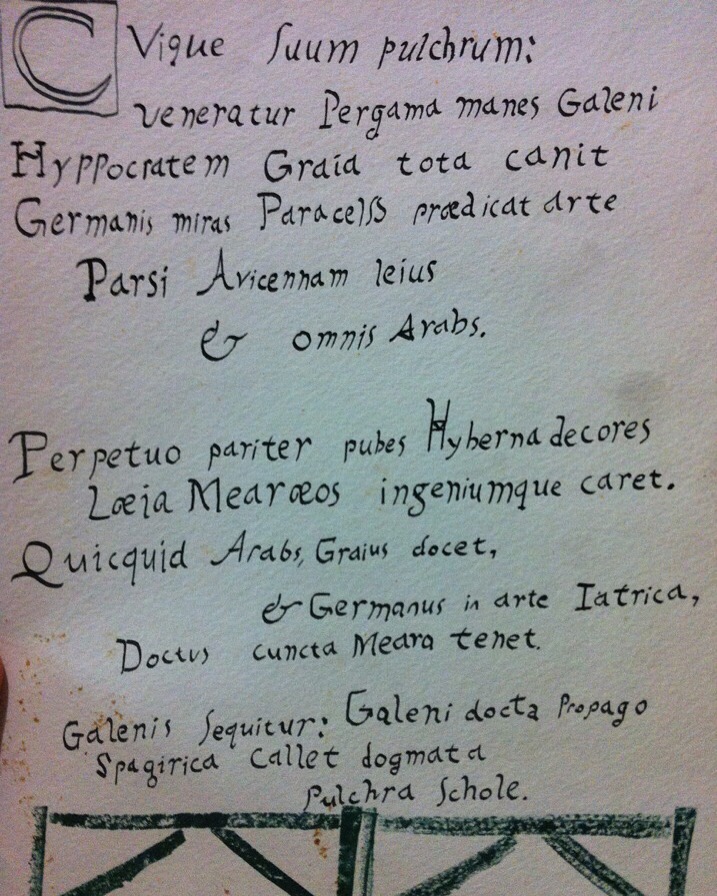
This is a poem about my family’s healing practice, written by a John Kelly in 1619, and published as a preface to a book my ancestor Diarmuid Ó Meadhra/Dermodius Meara/Dermot O’Meara wrote about hereditary diseases.
The poem is basically saying that what Galen and Hippocrates are for the classical world, and Avicenna is for the middle East, and Paracelsus for the German countries, O’Meara is for Ireland. Pretty high praise. Perhaps if i write a book i should look up John Kelly’s descendants and get them to write the preface.
All posts by bentley@consultant.com
Herb and Legend, pt. 1.
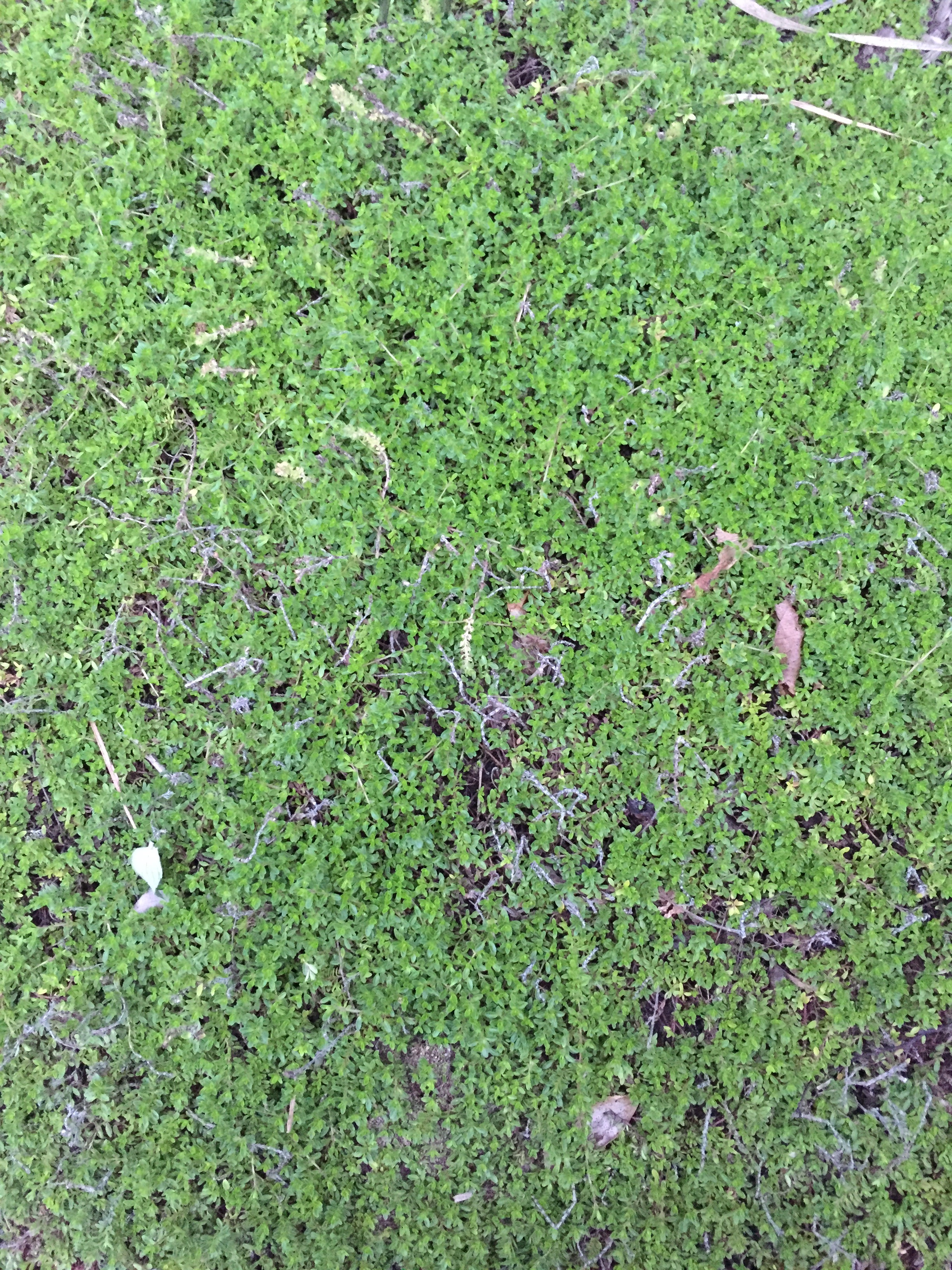
This is creeping thyme (Thymus serpyllium). In Irish it’s called ‘lus na mbrat’, which means the herb of the cloak.
The story is that, ages and ages ago, when the world was a different sort of place, there was a battle. And in this battle the great warrior Nuada, wielder of the sword of light, had his hand severed from him. So one of his physicians, Dian Cecht, made him a silver hand that could move and work just like his own hand. But the healer Miach, son of Dian Cecht, made a poultice for him that caused his hand to regrow.
This caused contention between the two physicians, the first claiming it was interference and the second claiming it was a better remedy. In a rage, the father murdered his son.
After he had been buried, his sister Airmid gathered 365 different herbs and laid them all on his grave. And over all of them she laid her woolen cloak. And from the grave, and from the cloak, and from the 365 different herbs, there grew this one new herb, spreading over everything in the shape of a cloak.
In terms of pharmacology, the plant is very similar to the more common thyme, containing thymol, carvacrol, and other aromatic compounds. It’s a powerful antiseptic and decongestant.
Red cedar and passionflower
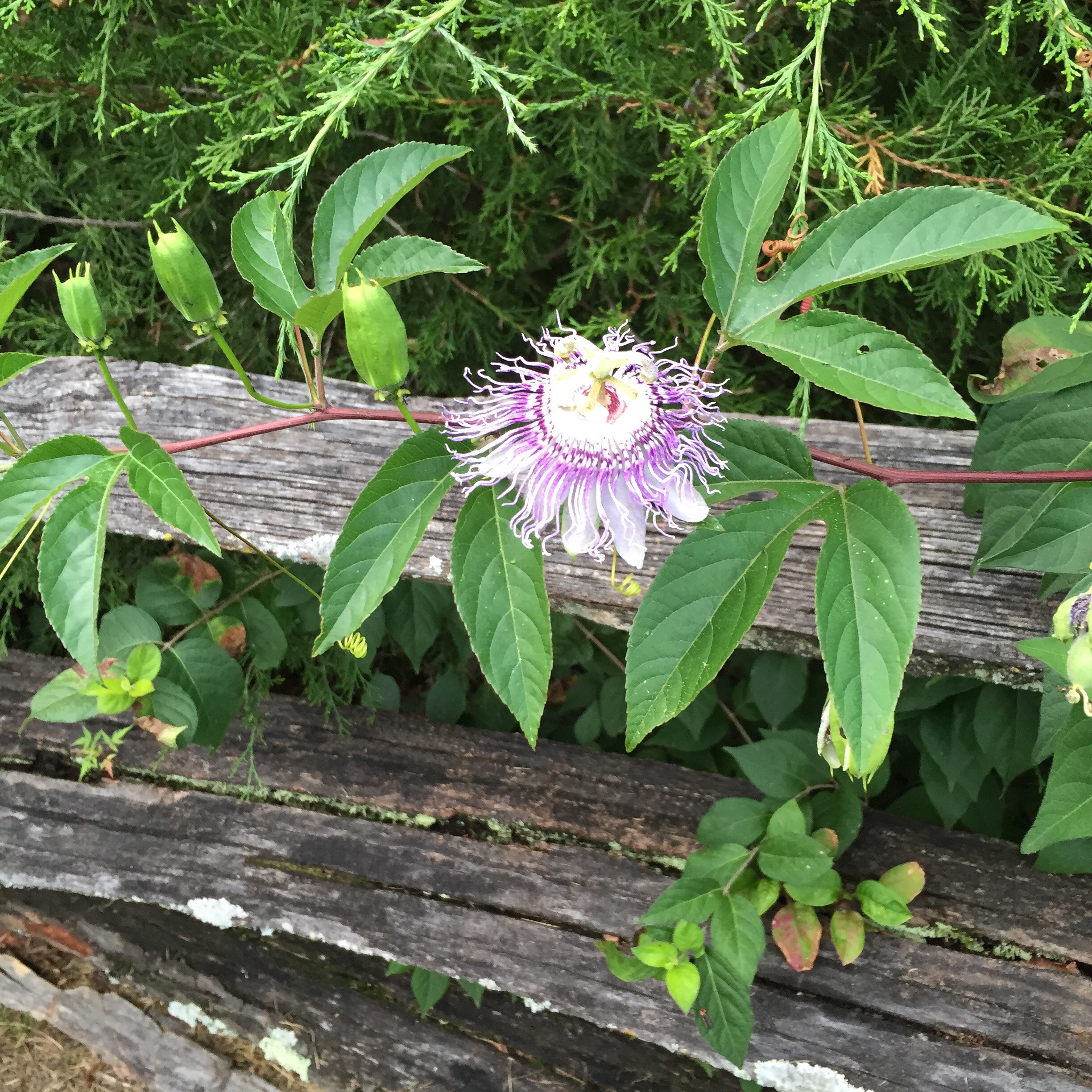
Passionflower and red cedar, frequent inhabitants of meadows and treelines here in Kentucky.
The first belongs to the genus Passiflora, which you can find here and in many tropical areas of the world.
The second belongs to Juniperus, and you can find its close relatives around the arctic and in mountains to an elevation of nearly 5,000 meters.
But here in this field, by this old wooden fence, you can find both.
Ginkgo
overview from Evidence Based Herbal Medicine

Ginkgo is used to support healthy brain function and circulation
Its primary mechanism of action appears to be vasodilation/anticoagulant properties
Ginkgo may increase bleeding, when taken with other anticoagulants
Hundreds of studies have been conducted on proprietary ginkgo extracts over the last four decades.
Article
Article about my practice by Kentucky for Kentucky.
Lichen Medicine
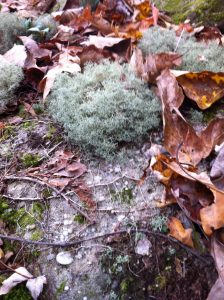
Cladina lichen.
Last weekend, at Whippoorwill festival, i led a group of people into the woods to show them some medicinal lichens. Lichens are simultaneously familiar and alien to most people. They grow nearly everywhere, on rocks and trees and old fenceposts and bare ground, and yet few people have names for them or know much about them.
A lichen is a single organism, consisting of fungal tissue and algal tissue working together. Lichens contain two sets of dna from two distant branches of the family tree of living things. They contain some substances that you might find in medicinal mushrooms like Reishi or Maitake, some substances that you might find in algae like spirulina or chlorella, and some substances that are only found in lichens.
There are many, many types of lichens, some very common and some known only from a single stand in the entire world. Here are a few of the lichens we encountered on our walk in the woods.
Usnea– probably the best known medicinal lichen, one of only a couple used commercially in the western world. Usnea contains lichen acids with a broad spectrum of antiinfective properties, as well as β-glucans that nourish the immune system. It also contains oil-soluble substances that are potent, novel pain relieving substances. Usnea is a stringy, mossy lichen that grows on tree branches.
parmelia and parmotrema– these are the common papery lichens that grow on tree bark and old fenceposts. They have similar antiinfective properties to usnea, and also contain a strong, non-sedating antihistamine.
Cladina– known as deer moss or reindeer moss (two different but possibly overlapping species), cladina grows on the ground in rocky places and in areas where the ground has been exposed by erosion. It often grows under conifers. Cladina is a diuretic, and has traditionally been used to dissolve stones in the kidneys. It’s also quite nutritious (though very acidic) and forms a staple of the diet of barren ground caribou and reindeer.
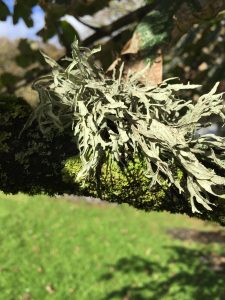
Evernia (oakmoss) on a tree branch. An Spiddal, Ireland. We didn’t see this one on the walk but it does grow around here. It can be made into a liniment for fungal infections.
Natural Health
Consultations available. Call 859-420-5648 to set up an appointment, or email bentley@consultant.com
